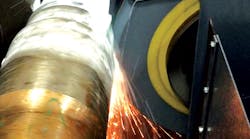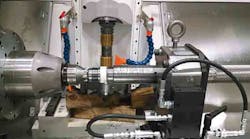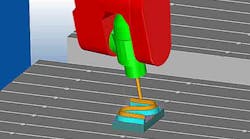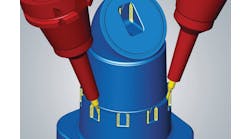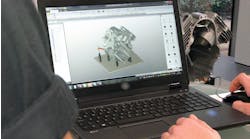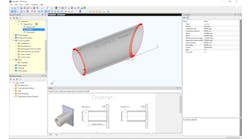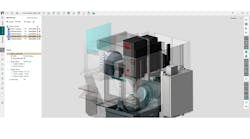Machining heavy forged parts requires precision, skill, and experience, but first of all it requires reliable power and process control. APeC Integration Services Inc. is an electrical systems integrator that specializes in machine tool updates, and one of its recent projects was to plan and carry out a comprehensive overhaul and upgrade of high-power centerless grinding machines for a railcar axle manufacturer. Simplifying precision grinding for the heavy-duty forgings started with retrofit of the CNC control platform.
Modernizing PLCs and CNC controls is a specialty for Wattsburg PA-based APeC, which was established in 1989, works with manufacturers to maximize the longevity and performance of their production machinery. Its retrofit services include upgrading servo and spindle motors and drives, PLC integration and custom machine controls, and complete CNC replacement.
The machine tools in the axle-grinding project are high-capacity Landis centerless grinders that use a dressable grinding wheel and a plunge grinding cycle to create precision profiles on the axle journals. During grinding, both the axle workpiece and the grinding wheel rotate in the same direction, which means that the two surfaces are moving in opposite directions at the point of contact, resulting in smoother operation. Once the machine is up to speed, the grinding wheel is fed – or ‘plunged’ – into the workpiece, and makes continuous contact with a single point along its length.
The plunging action is controlled by a servo-driven axis grinding at several feed rates, with transition points monitored by in-process gauging. A built-in, automated two-axis dresser system with a diamond-tipped tool is used to dress the grinding wheel whenever necessary.
This was the second time that APeC has improved the performance of these grinders, both times working with control systems based on the Flexium platform developed by NUM AG.
The original machines were hydraulically actuated and equipped with tracer-type wheel dressing systems. In the mid 1990s, APeC performed a full mechanical and electrical upgrade on each machine that included retrofitting a modern CNC system and in-process gauging instruments. At that time, the update was based on NUM’s Power 1060, which was seen as one of most flexible and user-friendly CNC systems available.
The full story is available at AmericanMachinist's affiliated site, ForgingMagazine.com
